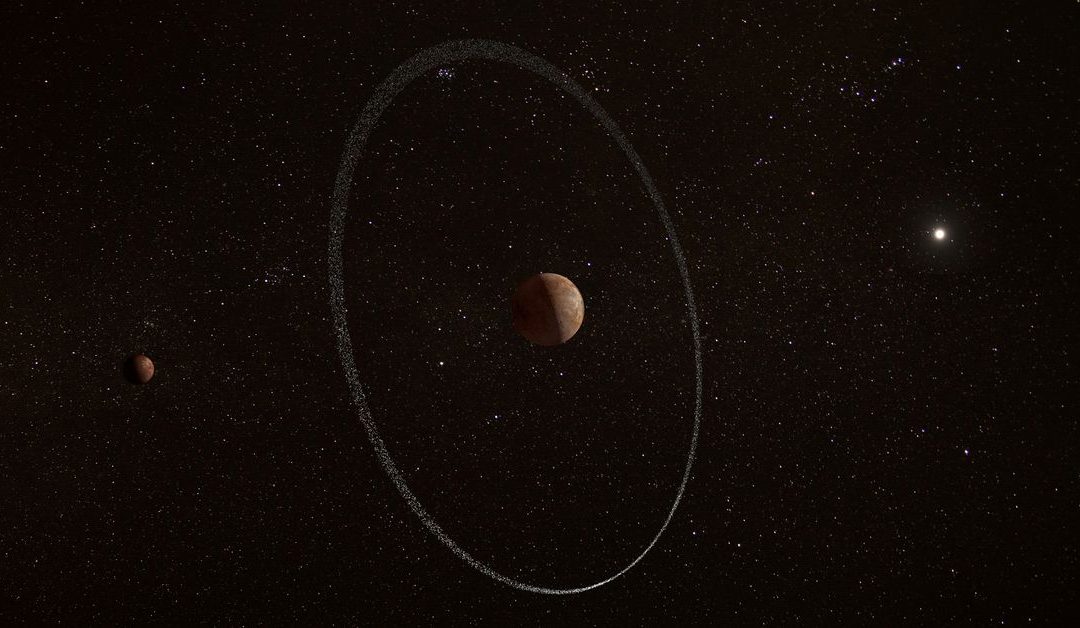Have you ever heard of Quaoar, the small distant world beyond Pluto in our solar system? Named after a god of creation in Native American mythology, Quaoar is producing some surprising discoveries for astronomers!
The latest discovery at Quaoar is a ring encircling the world, similar to the one around Saturn. But this one is located much further away from Quaoar than current scientific understanding would allow. This has left scientists scratching their heads, as this distance should have caused the particles to come together around the celestial body to form a moon rather than remain as separate components in a disk of ring material.
Discovered in 2002, Quaoar is currently defined as a minor planet and is proposed as a dwarf planet. It has a diameter of about 700 miles (1,110 km), about a third that of Earth’s moon and half that of the dwarf planet Pluto. It has a small moon called Weywot, Quaoar’s son in mythology, with a diameter of 105 miles (170 km) orbiting beyond the ring.
The ring, a clumpy disk made of ice-covered particles, is located about 2,550 miles (4,100 km) away from Quaoar’s center, with a diameter of about 5,100 miles (8,200 km). Unlike any other known ring around a celestial body, Quaoar’s is located outside what is called the Roche limit. This has left scientists considering possible explanations such as debris from the same formation process that originated the central body or material resulting after a collision with another body and captured by the central body.
Saturn has the largest ring system in our solar system. The other large gas planets – Jupiter, Uranus and Neptune – all have rings, though less impressive, as do the non-planetary bodies Chariklo and Haumea. But Quaoar’s ring is the first to be located outside the Roche limit.
The discovery of Quaoar’s ring has led scientists to reconsider theories for the aggregation of icy particles and suggest that particles might not always aggregate into larger bodies as quickly as one might expect. It’s an exciting time for astronomers as they explore this distant world and uncover its secrets.
Source: www.reuters.com
